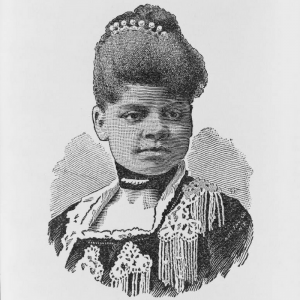Ida B. Wells: Suffragist and Anti-Lynching Activist

Ida B. Wells was an African American woman who was not afraid to confront the ugly truths that existed within American society. Born a slave and emancipated by the Emancipation Proclamation, she later began her career as a teacher and a writer and is remembered for fighting to end the horrific crime of lynchings in America. This mini lesson will introduce students to Ida B. Wells through a primary source and invite students to explore the geography of American lynchings through an interactive map.
30 minutes (mini-lesson)
Ida B. Wells was a trailblazer as an African American female who used the power of her words, both spoken and written, to confront racial and gender inequalities. This mini lesson will introduce students to Ida B. Wells through a primary source and invite students to explore the geography of American lynchings through an interactive map.
Do Now: (8 minutes)
Review the video Untold Stories of Black Women in the Suffrage Movement (first 6:30 minutes). Have students write down 3-5 statements about what they found new and interesting in the film. Encourage students to share their findings with a partner. This should introduce them to some of the work of Ida B. Wells, specifically as a suffragist.
Lesson: (15 minutes)
Before students begin, they will read the introduction and the title of “Lynching, our National Crime”. Based on what is presented in the introduction, they will fill out the first column of a KWL chart (Know, Wonder, Learned). They will then fill out the “wonder” column. What do they want to know? Students will read the primary source “Lynching, our National Crime''. They will then write down their 3-5 statements in the “learned” column.
- Students should discuss some of the questions they have with their partner. The teacher can call on students to then discuss their findings with the class.
- To complete the lesson (final minutes of class), students will be able to visualize the map of American lynchings provided by the Equal Justice Institute. Encourage students to take several minutes to explore the map and generate statements and questions they have about the map. Encourage students to share their findings with the class. For example, students might be surprised that lynchings occurred outside of the Deep South. The might wonder what events happened that led to an upsurge in lynchings in certain locations. They might identify the challenges of making a resource like this (i.e. the lack of documentation of lynchings).
If time permits, or for homework, students will read the provided NPR article and explore the challenge America’s Congress has had, and continues to have, to make lynchings a federal law. A crusade Ida B. Wells started over 100 years ago.
- D2.His.4.9-12. Analyze complex and interacting factors that influenced the perspectives of people during different historical eras.
- D2.His.3.9-12. Use questions generated about individuals and groups to assess how the significance of their actions changes over time and is shaped by the historical context
